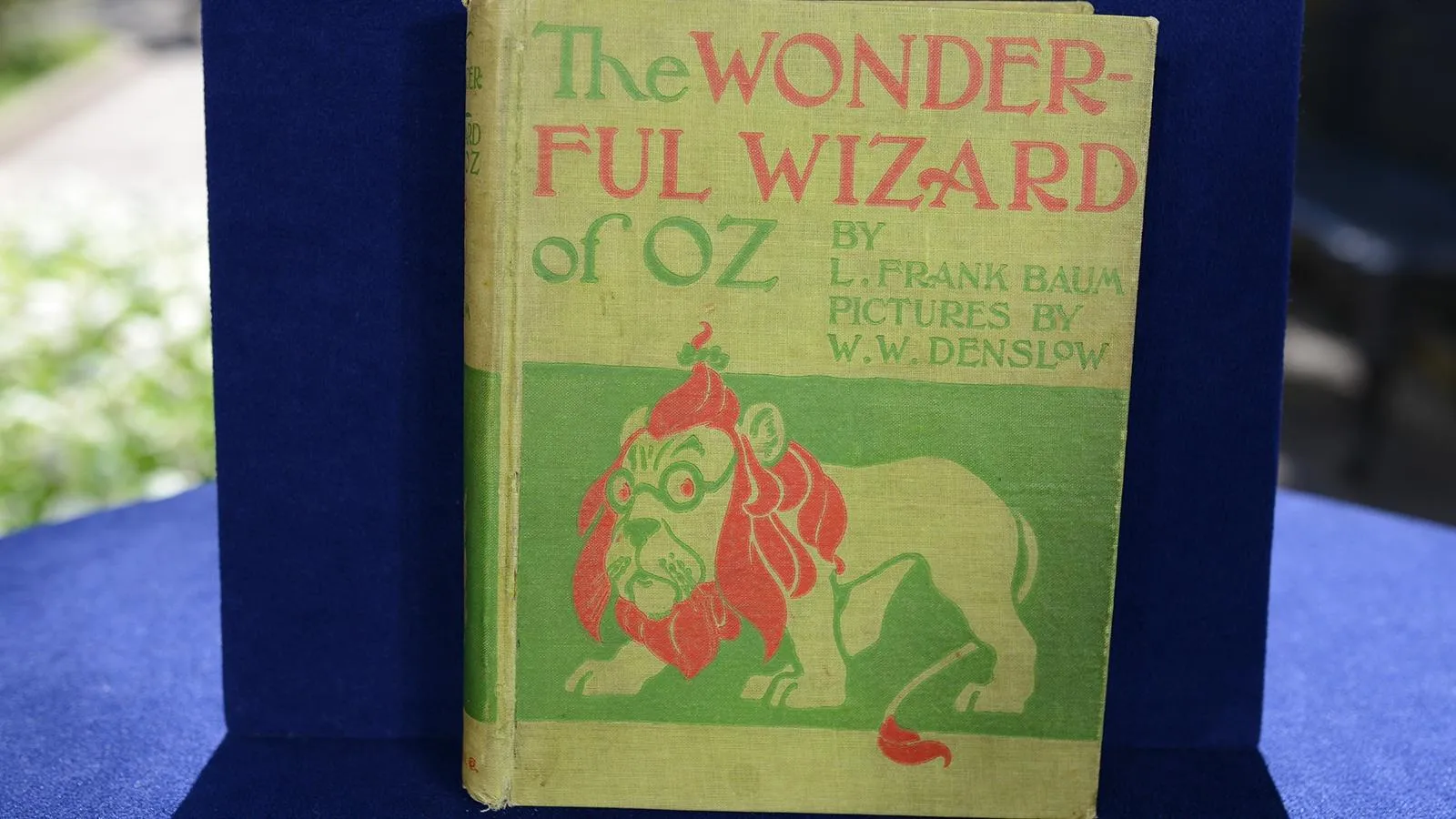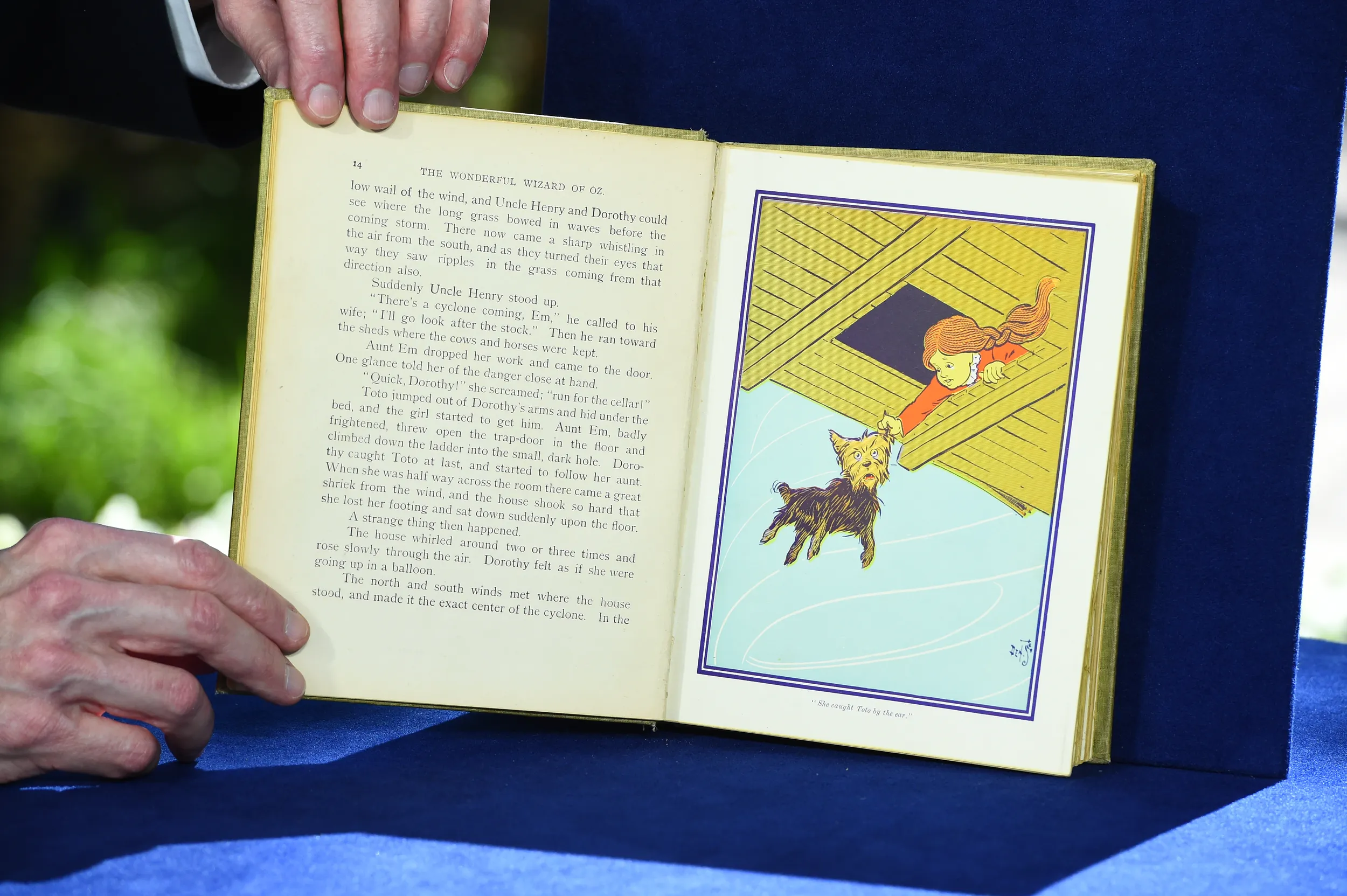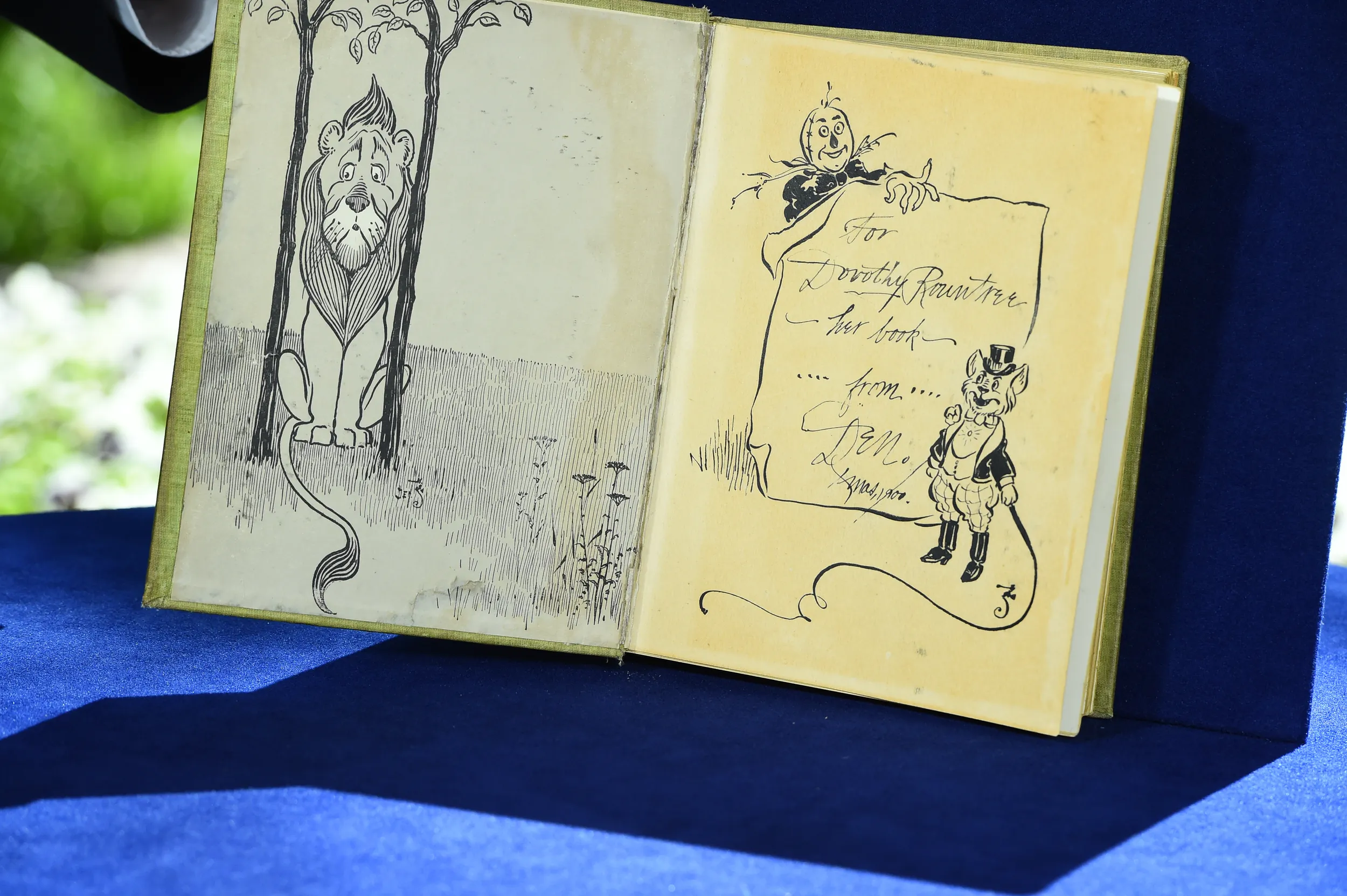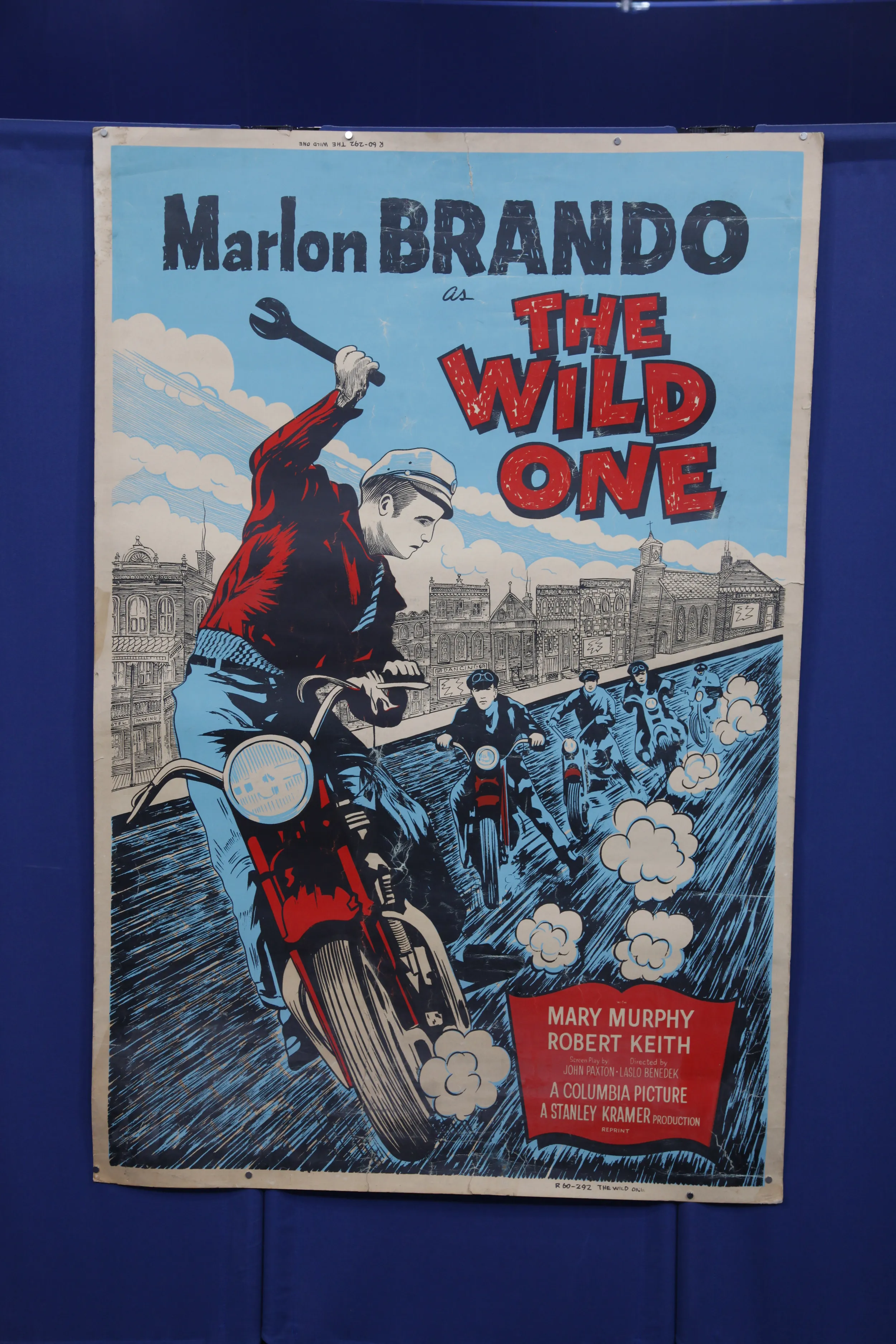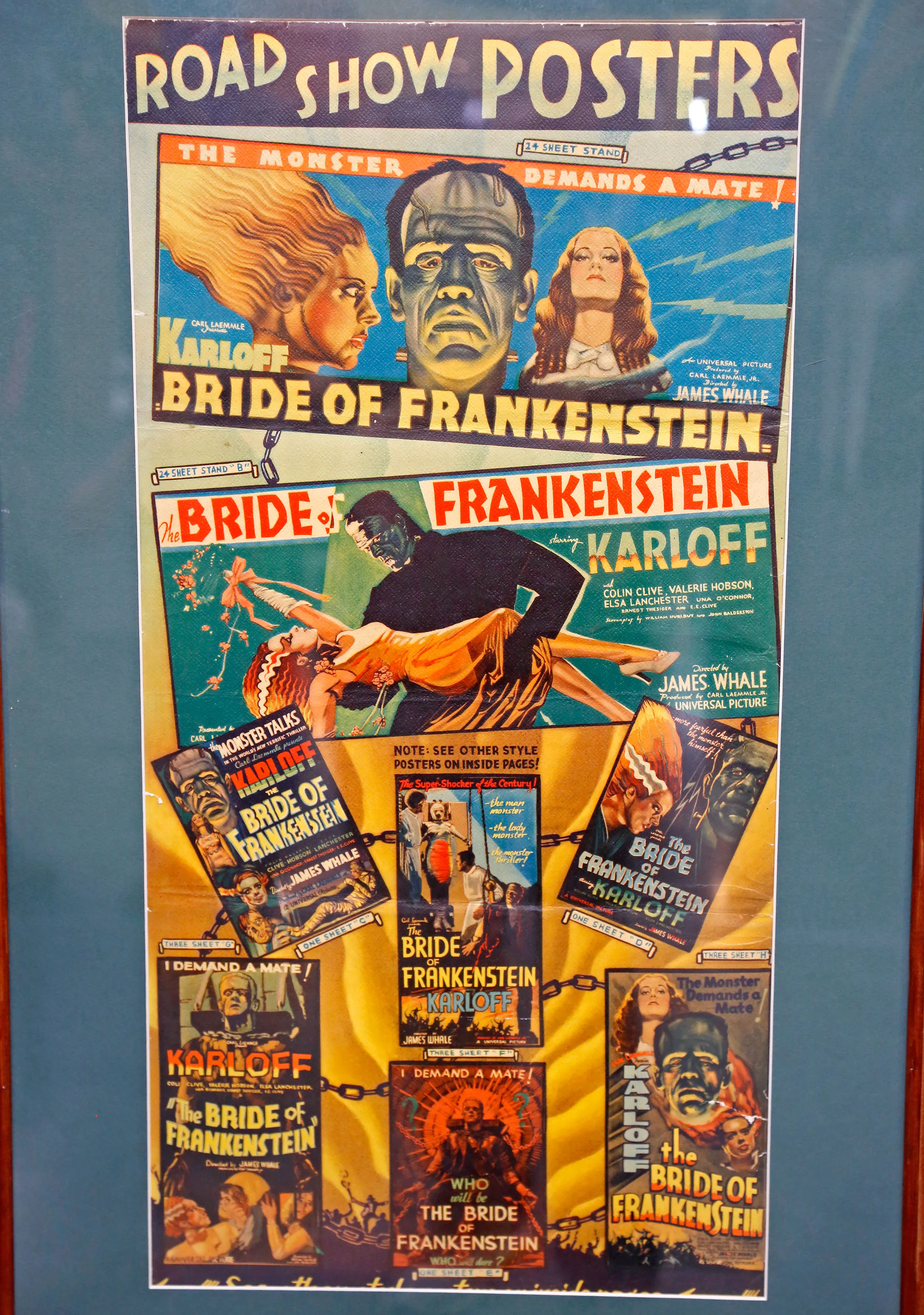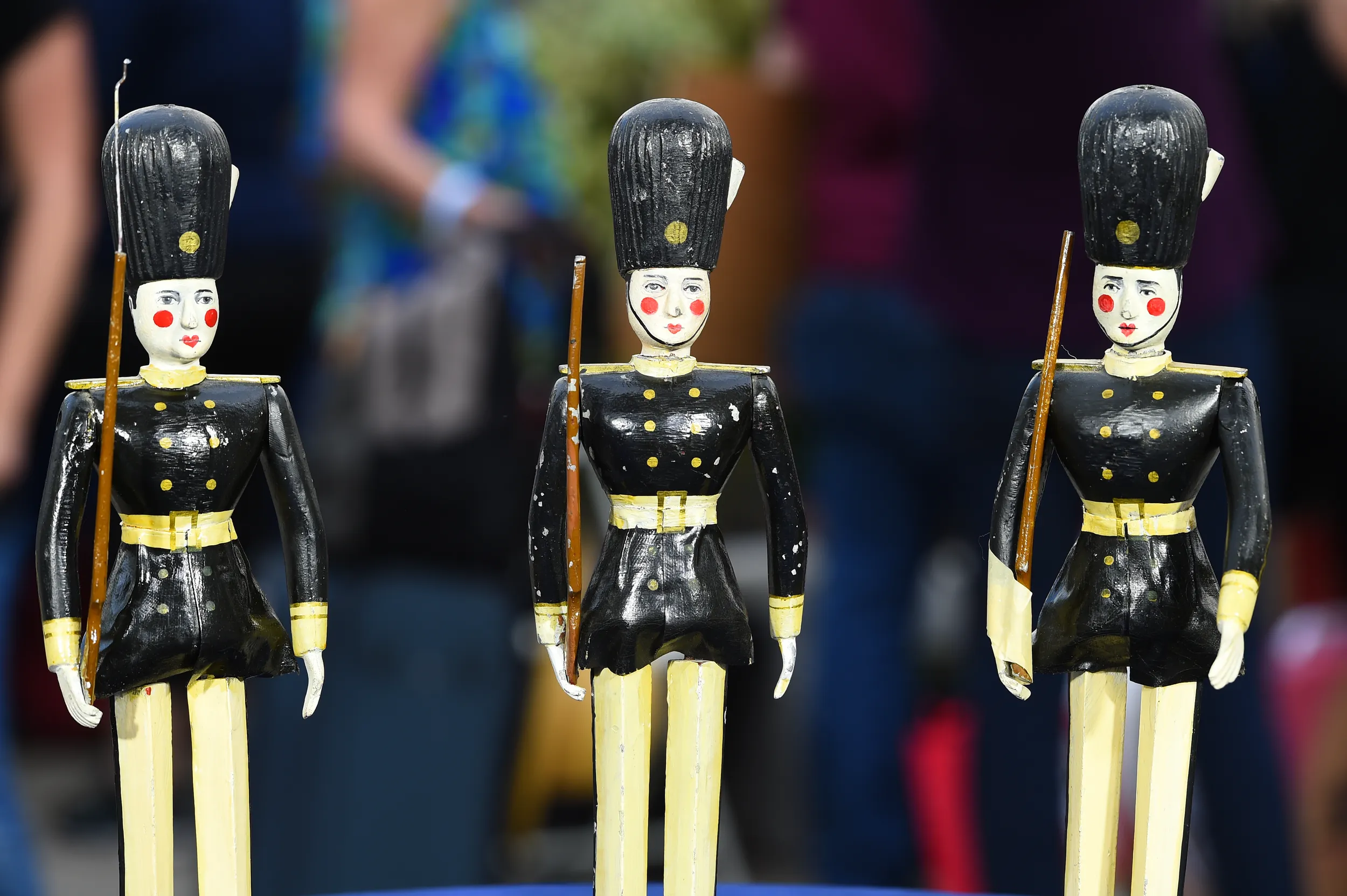GUEST: I have a first-edition The Wonderful Wizard of Oz. My dad actually purchased this back in the mid-'60s. I have the mailing envelope from Texian Press in Waco, Texas. I think they were book dealers...
APPRAISER: They were probably a local bookseller, or...
GUEST: Exactly.
APPRAISER: Yeah.
GUEST: And so, it was in that mailing envelope.
APPRAISER: Fabulous.
GUEST: And it was postmarked December of '65. And I was only two years old.
APPRAISER: Right, right,
GUEST: I don't know how much he paid for it. My father passed away when I was 11. Then the books went to my mother, and I just remember growing up with them. He was obsessed with The Wizard of Oz, so he started collecting them. What's unique about this particular first edition is that it's autographed by the illustrator, who is W.W. Denslow. He also has an original piece of art inside the cover of this book.
APPRAISER: Yeah. W.W. Denslow, a very popular illustrator at the turn of the century.
GUEST: Yes.
APPRAISER: And he and Baum collaborated in a really special way on The Wizard of Oz.
GUEST: Yes.
APPRAISER: And it's where both of their names were immortalized, especially Denslow in this alliance.
GUEST: My understanding is even he was maybe a little bit more well-known than, than the author, at the time.
APPRAISER: At the time. Yeah. And then after the book took off...
GUEST: Yes.
APPRAISER: But they were both willing to-- it's kind of one of those situations.
GUEST: Exactly.
APPRAISER: And I think they share the copyright, if I'm not mistaken.
GUEST: Yup.
APPRAISER: It was an expensive book, and it was so important to them that it be illustrated in color. Color printing back then was expensive. You needed... it was a very complicated process. They agreed it was so important, Denslow and Baum, that they paid to have that done. And then later on, there was a falling-out, and issues, I think, over copyright ensued.
GUEST: Yes, sure.
APPRAISER: Because they were both big celebrities by that point.
GUEST: Yes.
APPRAISER: That can lead to friction. This is their ideal partnership, was here. This is the front free endpaper. And what Denslow has done is really quite extraordinary, because it really matches... This is a printed illustration, but you can see his style. He went to very great degree to draw the Scarecrow. This is a cat-like figure, I'm not sure who that is. With the whip, like a...
GUEST: I'm, I'm not even sure.
APPRAISER: Like a circus ringmaster, almost looks like, but it's inscribed within that piece of paper. So he took a lot of time. So I'm thinking, "Wow, that's interesting." First of all, it's a fabulous book. The book itself, The Wizard of Oz, is valuable, but when I see this, this isn't just signed at a book signing. What's so special is this drawing, which is an ink drawing. It's clearly an original drawing that was clearly done for the person the book was inscribed to, Dorothy Rountree. Now, Dorothy, you think, "Okay, that's interesting. ‘Her book, from Den’,” which was his abbreviation of Denslow. And then he puts "Christmas, 1900," which is just, just soon after the book was really just being published.
GUEST: Yeah.
APPRAISER: And he signs with his signature seahorse monogram. It's, it's notable as his symbol. It's on the spine of the book. It's everywhere. So the book was published in 1900, Chicago, by George M. Hill. Your dad, the appeal was Wizard of Oz, do you think? Denslow, or...
GUEST: I think initially Wizard of Oz. He was born in 1914, so obviously, when he's growing up, as a child, I'm assuming "Oz" was very, very popular.
APPRAISER: Sure, sure.
GUEST: That was a childhood obsession.
APPRAISER: Yep.
GUEST: And so in adulthood, he had the means to start collecting, and he collected thousands and thousands of books.
APPRAISER: I started to ask myself why... You know, what's the connection? This is not just a little casual signature. I looked up Rountree, and what is interesting is the association, there was a, a Harrison Rountree, who was Dorothy's father, and Harrison H. Rountree was a very wealthy Chicago banker, investor.
GUEST: Okay.
APPRAISER: He, in fact, helped Baum out. You know about, Baum had financial problems.
GUEST: Yes, all through his life, I think.
APPRAISER: Rountree was very much linked to the whole Baum-Denslow story.
GUEST: I gotcha.
APPRAISER: Which, further investigation, we find that there is even a suggestion that the Dorothy character might have been named after Rountree's daughter.
GUEST: Oh, wow.
APPRAISER: So, this could be the original Dorothy. There's a lot of dispute because he had a niece named Dorothy who passed away as a child.
GUEST: Okay.
APPRAISER: Baum did, by the name of Dorothy, and they thought maybe it was a homage to her.
GUEST: Okay.
APPRAISER: At the same time, we find out that a good close associate had a daughter named Dorothy who was very meaningful to the whole enterprise. Sure. And to have that inscription done with such care, obviously, a Christmas gift...
GUEST: Sure.
APPRAISER: This is no longer just, you know, a girl named Dorothy. This might really be the Dorothy, possibly. So, the book itself is fabulous. It's a second-state text, which I would assume was given as a presentation, because the text is accurate.
GUEST: Yes.
APPRAISER: It's most up-to-date, still from the year of publication. The book, by the way, is in very nice condition. I'd say it's close to fine. It's very good to find hinges are good, it hasn't been repaired.
GUEST: Yes.
APPRAISER: No restoration.
GUEST: No, no.
APPRAISER: It's just an honest copy, we call it. The book itself-- auction estimate would be in the $20,000 to $30,000...
GUEST: Yeah.
APPRAISER: You know, just a copy. No signature, no Denslow.
GUEST: Yeah.
APPRAISER: With the added Denslow, with that fine drawing, presenting it, and with the depth of the potential Dorothy association, it really elevates this thing, you know?
GUEST: Okay.
APPRAISER: So I would say, safely, if we were an auction estimate, we put $60,000 to $80,000 estimate.
GUEST: Oh, my goodness!
APPRAISER: Yeah.
GUEST: Now, that-- and that's an estimate. And it's not for sale. (laughs)
APPRAISER: Good. I would insure it, it's worth $100,000 insurance.
GUEST: Okay, yeah.

